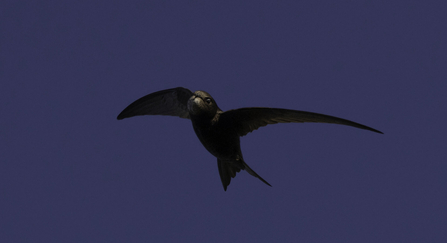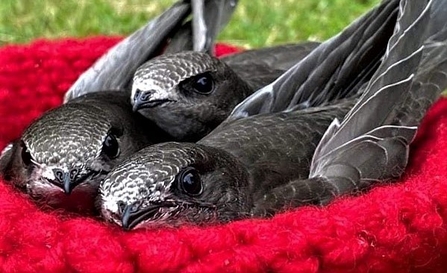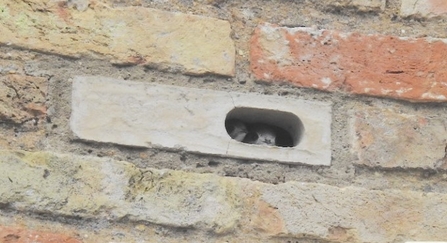This month the focus is firmly on swifts.
No problem if you can’t tell a swallow from a swift. Swifts are not to be confused with swallows or house martins, both have large areas of pale colour. Swifts do not, they are dark on colour all over. Unlike swallows and martins, swifts do not perch on wires.
Swifts feed, drink, preen, sleep and even mate on the wing, only ever landing when they need to nest and lay eggs.




